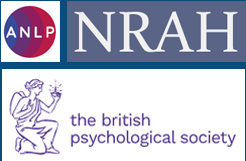It is estimated that 68% of men and 58% of women in the UK are either overweight or obese. There are significant health implications of being obese, these include increasing the risk of; type 2 diabetes, coronary heart disease, some types of cancer, and stroke. There is often a psychological impact of obesity, with overweight people more likely to have low self-esteem and depression.
There are a number of reasons why people develop driving nerves. Often they can be result of being involved in a car accident or know someone who has been in a car accident, or even watching a car crash on TV. Read more
It is estimated than around 1 in 3 of us are struggling with our sleep, with many people developing poor sleeping habits. It is important to seek medical advice if you are struggling to sleep as it may be an indication of an underlying medical problem. There are significant health problems associated with regular lack of sleep, including depression, obesity, diabetes, high blood pressure, strokes and heart failure. In our increasing busy lives, it is useful to know what steps we can take to get into a good sleep pattern. Clinical Hypnotherapist Stephen McMurray gives ten steps to hypnotise yourself to getting a better night’s sleep.
Sleep is natural to babies and young children. As we get older all sorts of pressures affect our natural sleeping pattern. Hypnosis comes from the Greek god of sleep hypnos. Hypnosis involves entering a trance like state of narrowed focus and increased suggestibility. Hypnosis is ideal in helping people sleep better as it relaxes both the body and mind and can help create a healthy night-time routine.
- Develop a relaxing nigh time routine
Make sure you feel relaxed before you go to bed. If you have been busy working on something it will be hard for your brain to switch off. Leave an hour to relax before going to bed. Maybe have a warm bath. If you do have some worries, write them down and leave them to deal with the next day.
- Make sure your environment is good to sleep in
It is important that your bedroom is right for you to sleep in. It is more difficult to get a good night’s sleep if you find your bed uncomfortable. Is the duvet right for you for the time of year? It is also more difficult to sleep if there is too much light or noise outside, or not well ventilated. So, make your bedroom right for you to sleep in.
- Making sleep your goal
When you are going to bed it is important that you are making sleep your goal and not using your bed to work in or watch TV and that you are tired and ready to sleep. Otherwise, you will associate your bed with these activities and you will expect to be alert and awake when you go to bed. Therefore, you need make sleep your goal and associate your bed with sleeping.
- Undertake a body scan
Starting at the top of your head, tense up the muscles, then make them go relaxed. Continue with this routine going down your body. Tense up the muscles and then relax them. Go through the rest of your head, down to your neck, shoulders, arms, back, stomach, legs, feet and toes. Make those muscles limp.
- Deep breathing
Breathing is an integral part of relaxation. When you have finished undertaking your body scan and your body is nice and relaxed, you are ready to undertake some deep breathing. Breathe in slowly through your nose from the diaphragm and slowly exhale through the mouth. Repeat several times.
- Visualisation
After your body and mind are relaxed it is useful to visualise a relaxing place as focusing on an image can increase feelings of drowsiness. So, think about the most relaxing place you can think of, maybe a favourite beach or park. Get the picture very clear and any sounds or smells you can imagine.
- Counting
One method to deepen your state of relaxation in preparation is to count down from ten. In addition to counting down, you may wish to add a mantra to each number you count down. Mantras help focus the mind on what you want to channel. For example, ten restful, nine relaxed, eight sleepy, seven peaceful, six drowsy, five calm, four still, three tranquil, two tired, one sleep. Say your mantra on when you exhale and focus on the meaning of your mantras.
- Suggest sleeping
Often people who struggle to sleep do actually sleep some of the night, but don’t realise that they do sleep some of the night. It is important to give yourself reassurance that you can gradually fall asleep and give yourself suggestions about your ability to get a good night’s sleep.
- Return to sleep
Some people have no problems getting to sleep, but often wake up through the night, sometimes to use the toilet. As part of your self-hypnosis applications, you can make suggestions to reduce your fluid intake before going to bed and also your ability to fall asleep again.
- Self-hypnosis recording
Making your own sleep self-hypnosis recording can help you get into a regular routine to help you sleep better, especially if you are having any difficulty remembering any of the above steps. You can choose your own relaxing music for your recording, your own images, suggestions and mantras.
There are times when all of us need to boost our confidence. Confidence gives us that important belief in ourselves, which enables us to perform at the best of our ability. Real confidence is generally developed by experience. Self-esteem and self-efficacy feed into confidence. People with high self-esteem accept and value themselves, whilst people with high self-efficacy believe in their ability to succeed. There are a number of actions you can take to boost your confidence.
This is an article I got published in Pain Matters magazine. Hypnotherapy is one of the best-known complementary therapies, but, it is also one of the least understood. Hypnotherapist Stephen McMurray explains how it works and how it can be used in pain management. Read more
Recent research published in the Journal of Affective Disorders found that hypnotherapy was an effective treatment for people suffering with depression. Hypnotherapy works at the subconscious level to offer positive suggestions to boost moods and break negative thinking patterns, making people feel better. Read more
Needle phobia is thought to affect at least 10% of the population and is when people have a fear of a medical procedure that involves needles or injections. For many this is related to a fear of seeing blood, or simply thinking about the injection. Which may make them feel faint. Often needle phobia has its origins in bad memories of injections as a child.
Hypnotherapy can help you overcome needle phobia by putting you in a relaxed state of mind and making positive suggestions to your subconscious mind. These positive suggestions can help you disassociate yourself from the phobia or fear. This can take the emotion of the needle away from you and leave you feeling much more in control and calmer about going for an injection or blood test.
As the vaccine continues to be rolled out, it is important that you get it (unless there is a reason you can’t). If you have a fear of needles, it is worth getting a hypnotherapy session to help you feel calmer and more in control of the situation. Contact me now to find out more about hypnotherapy and how it can help you get over any fears of needles you may have.

I met Peter Krykant outside the Scottish Parliament. Peter runs the safe consumption van in Glasgow. This enables drug users to take their drugs in a safer method than out in the streets. Peter brought his van to the Scottish Parliament to highlight the appalling drugs deaths in Scotland, which is a much worse than the overall UK drugs death rate. Read more
A report published in the British Medical Journal claimed that the economic cost of gambling addiction had been substantially underestimated. There are an estimated nearly half-a-million problem gamblers in the UK. They are more likely to be in lower economic classes and least able to afford such an addiction. Some of the increase in problem gamblers has been linked to those playing fixed-odds betting terminals (FOBTs). Read more
Chronic pain is when pain last more than 12 weeks and after an injury would have healed. It often serves no purpose and is linked to conditions such as diabetes and arthritis. It is estimated to affect at least eight million people in the UK. This can have a very detrimental impact on quality of life, leading to sleeping problems, reduced energy, relationship and work problems. Read more

